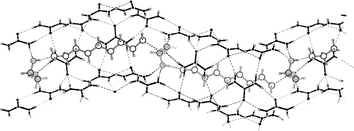Hydrogen-bonded chains of α,ω-diaminoalkane and α,ω-dihydroxyalkane guest molecules lead to disrupted tunnel structures in urea inclusion compounds†
Abstract
Structural features of the urea

* Corresponding authors
a School of Chemistry, University of Birmingham, Edgbaston, Birmingham, England
b
School of Chemistry, Cardiff University, Park Place, Cardiff, Wales
E-mail:
HarrisKDM@cardiff.ac.uk
Structural features of the urea

 Please wait while we load your content...
Something went wrong. Try again?
Please wait while we load your content...
Something went wrong. Try again?
S. Lee, B. M. Kariuki and K. D. M. Harris, New J. Chem., 2005, 29, 1266 DOI: 10.1039/B502004M
To request permission to reproduce material from this article, please go to the Copyright Clearance Center request page.
If you are an author contributing to an RSC publication, you do not need to request permission provided correct acknowledgement is given.
If you are the author of this article, you do not need to request permission to reproduce figures and diagrams provided correct acknowledgement is given. If you want to reproduce the whole article in a third-party publication (excluding your thesis/dissertation for which permission is not required) please go to the Copyright Clearance Center request page.
Read more about how to correctly acknowledge RSC content.
 Fetching data from CrossRef.
Fetching data from CrossRef.
This may take some time to load.
Loading related content
